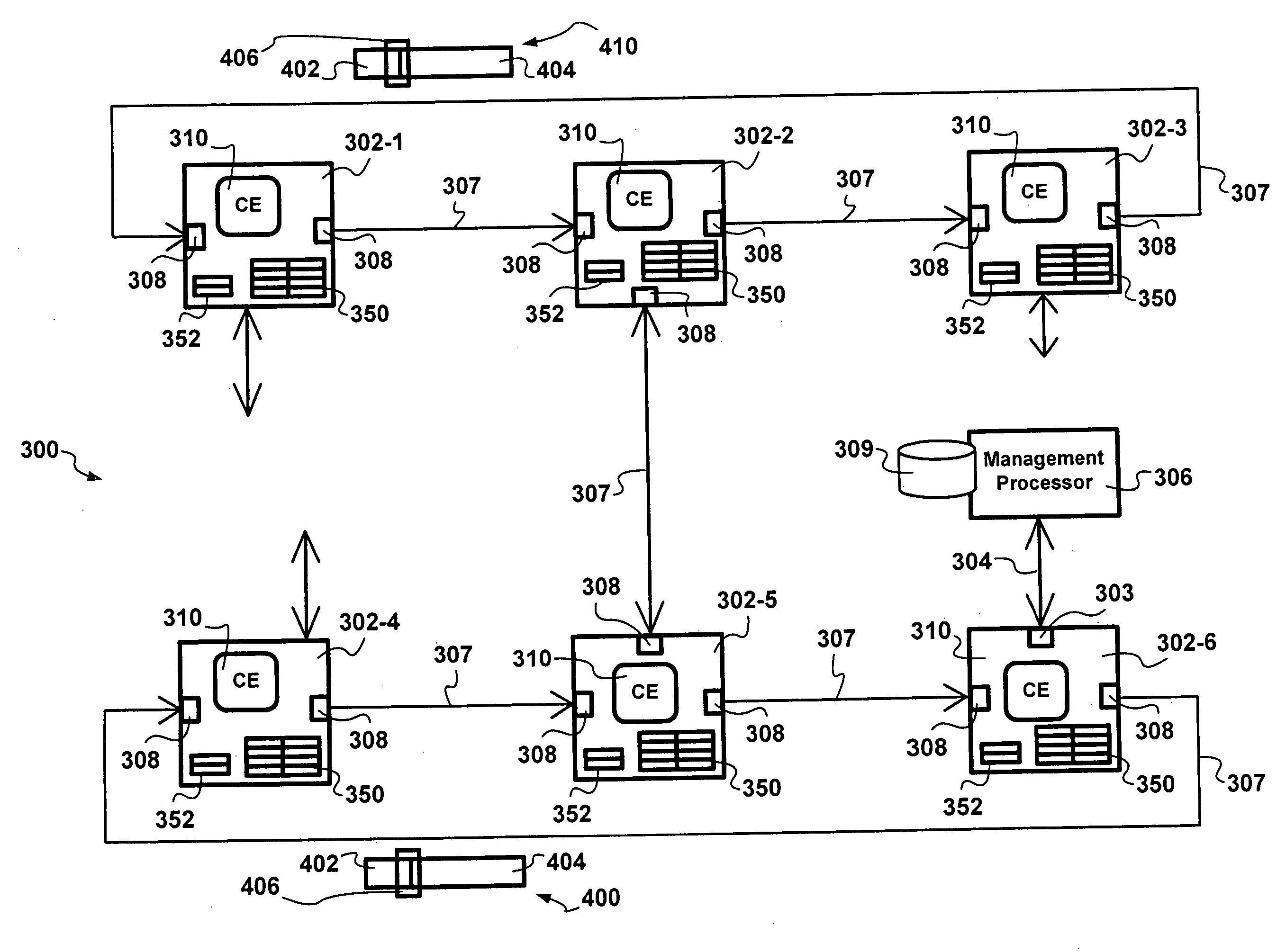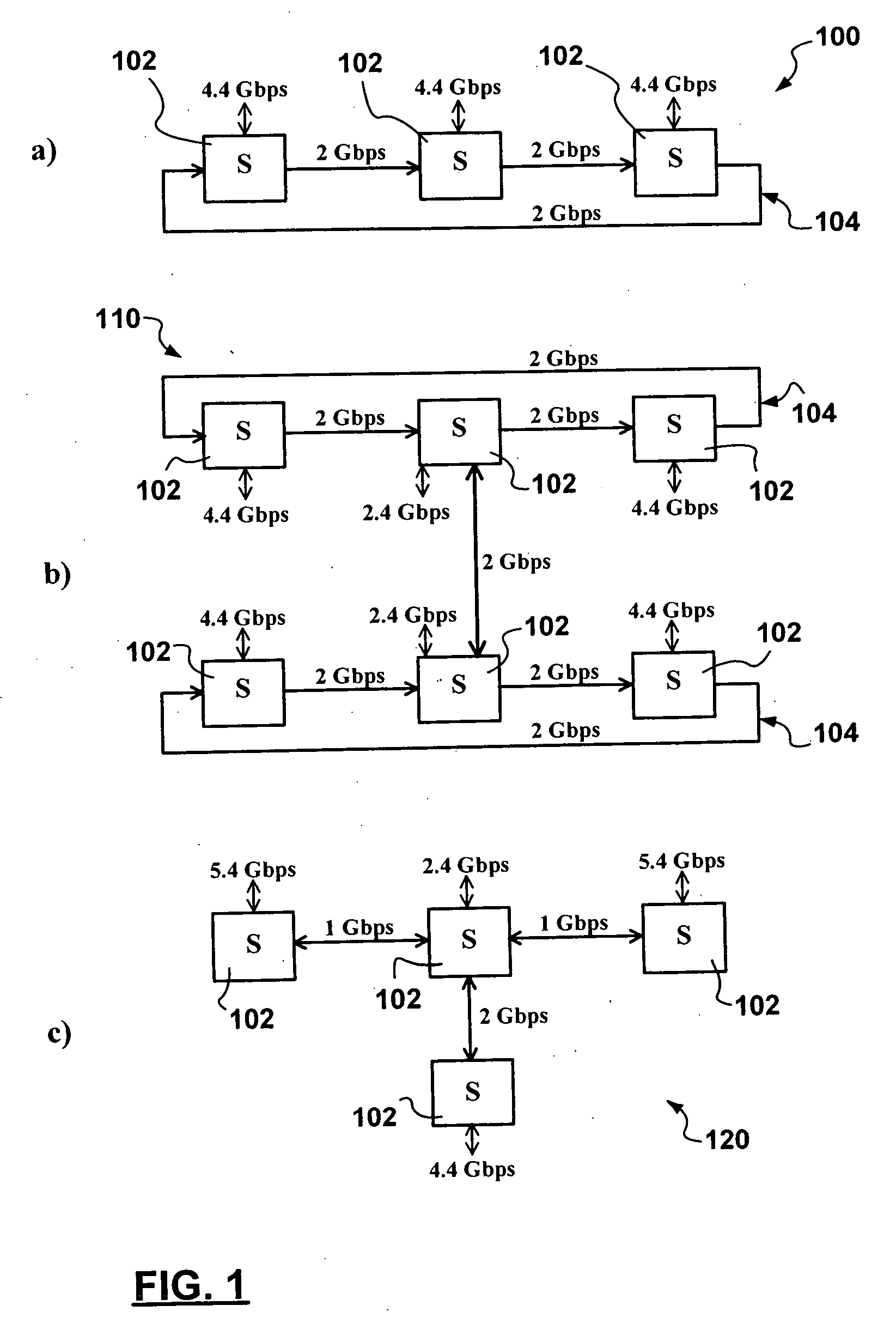Remote control of a switching node in a stack of switching nodes
a node control and switching node technology, applied in the field of communication network switching network node control, can solve the problems of difficult control of switching nodes, low deployment efficiency, and high cost of management processors, and achieve the effect of reducing deployment, configuration, management and maintenance overheads
- Summary
- Abstract
- Description
- Claims
- Application Information
AI Technical Summary
Benefits of technology
Problems solved by technology
Method used
Image
Examples
Embodiment Construction
[0028] Making reference to FIG. 3, in accordance with an exemplary embodiment of the invention, network switches 302 in a stack 300 are configured and controlled by a management processor 306 connected 304 to one of the switching network nodes 302 without deploying a separate management processor for each switching network node 302 in the stack 300. The approach presented herein is referred to as a remote configuration and control of switching nodes 302 in a stack 300.
[0029] Exemplary elements of a remote configuration and control deployment in a stacking configuration include links interconnecting switching nodes 302 referred to as stacking links 307 connecting stacking ports 308.
[0030] In accordance with the exemplary embodiment of the invention, each frame 400 transmitted from via a stacking port 308 includes a Frame stacking TAG (FTAG) 406, having the following exemplary format:
FieldField DescriptionClassifier action0 - Normal L2 / L3 search.1 - Flow-based table lookup. Use fl...
PUM
 Login to View More
Login to View More Abstract
Description
Claims
Application Information
 Login to View More
Login to View More - R&D
- Intellectual Property
- Life Sciences
- Materials
- Tech Scout
- Unparalleled Data Quality
- Higher Quality Content
- 60% Fewer Hallucinations
Browse by: Latest US Patents, China's latest patents, Technical Efficacy Thesaurus, Application Domain, Technology Topic, Popular Technical Reports.
© 2025 PatSnap. All rights reserved.Legal|Privacy policy|Modern Slavery Act Transparency Statement|Sitemap|About US| Contact US: help@patsnap.com



